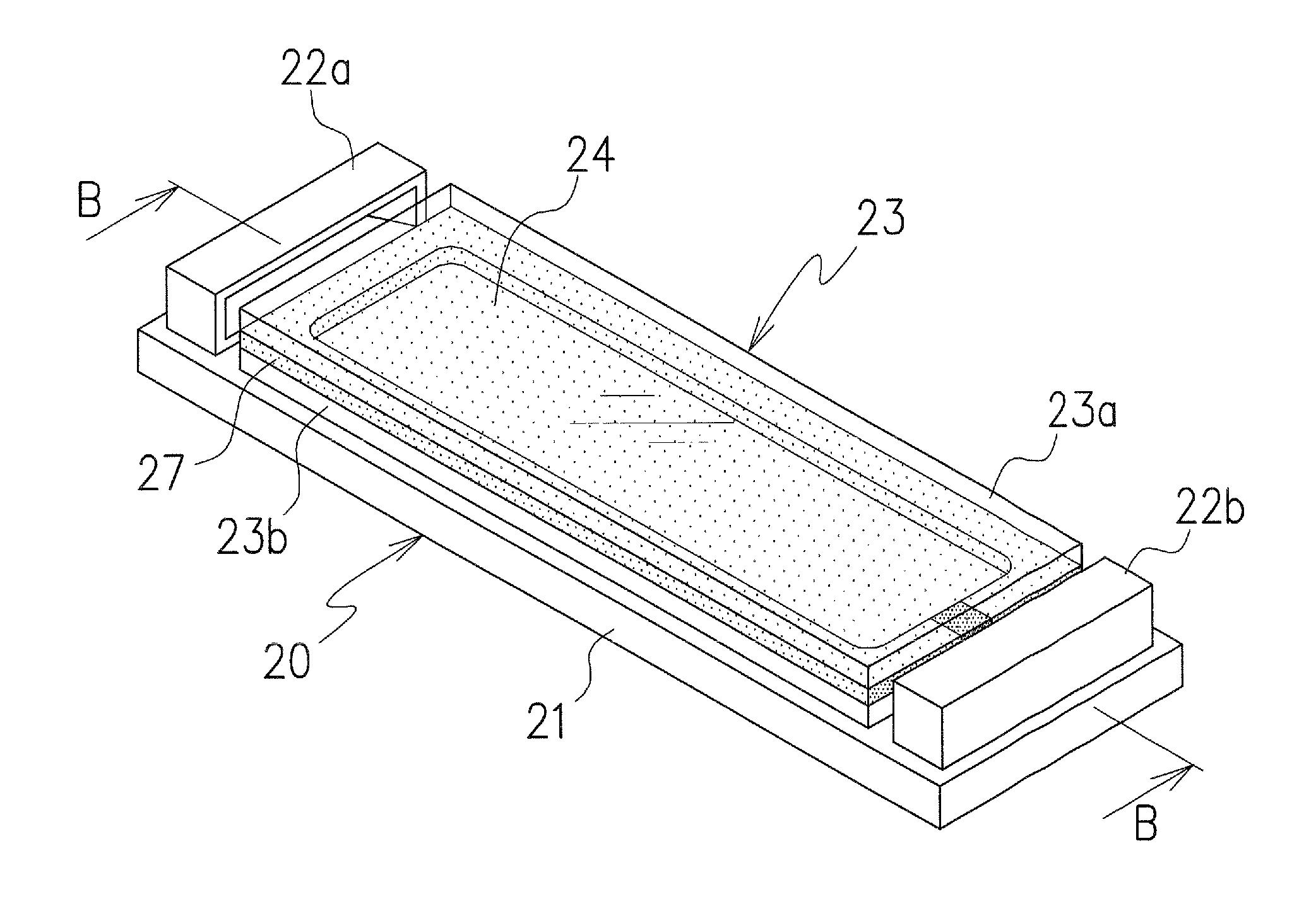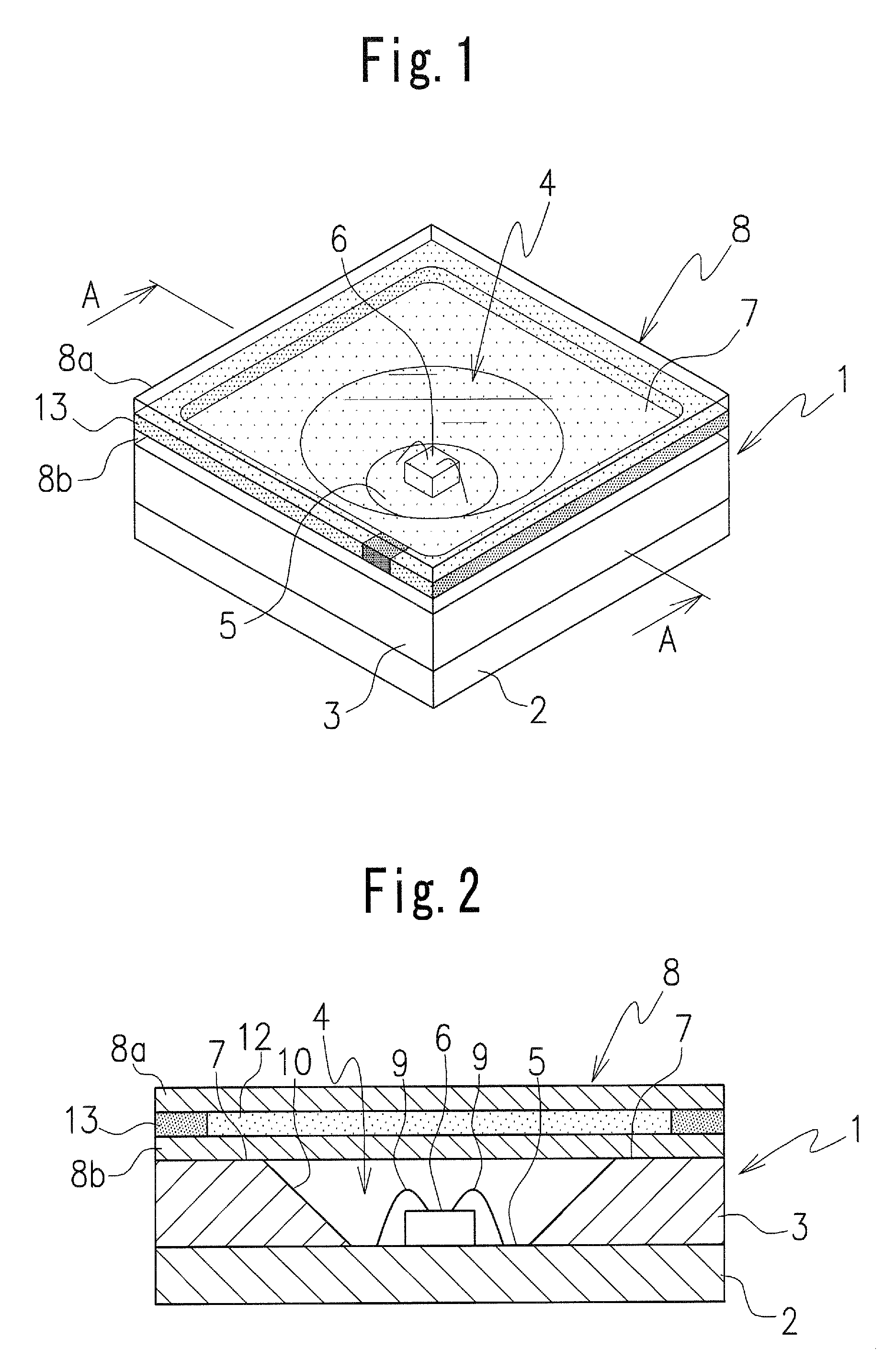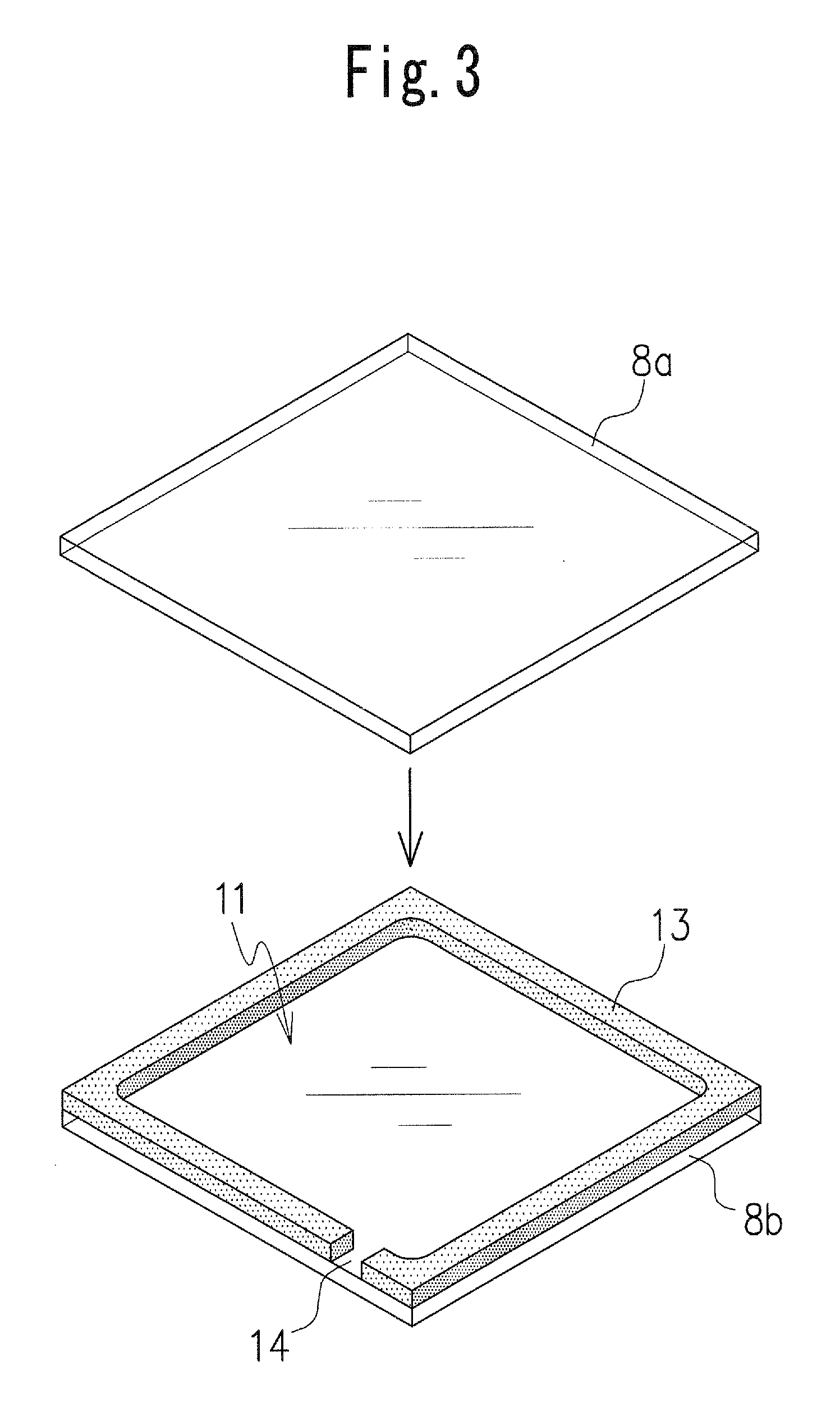Translucent laminate sheet and light-emitting device using the translucent laminate sheet
a technology of translucent laminate and light-emitting device, which is applied in the direction of discharge tube luminescnet screen, lighting and heating apparatus, instruments, etc., can solve the problems of difficult to obtain white light having high chromaticness and disclose a light-emitting device, and achieve low color deterioration in organic phosphor, reduce color variation, and high color reproducibility and chromaticness
- Summary
- Abstract
- Description
- Claims
- Application Information
AI Technical Summary
Benefits of technology
Problems solved by technology
Method used
Image
Examples
example 1
[0078]A translucent laminate sheet was disposed in front of a near-ultraviolet LED, GU35S400T (central wavelength: 400 nm, made by Showa Denko Co., Ltd). A special thin glass plate (white glass plate), D263No. 2 (heat expansion coefficient: 73×107 / ° C.) made by Spiegel Glass Company in Germany was used for each of two glass plates in the translucent laminate sheet. More specifically, glass plates each having a size of 5.0 mm×5.0 mm and a thickness of 0.21 mm were used. A paste of the aforementioned europium complex compound [a combination of X═H, Y═CF3, Z═H, p=2, q=3 in the chemical structural equation (1)] was disposed between the glass plates, and the glass plates between which the paste was disposed were fusion-bonded with an Sn-type solder, in a nitrogen atmosphere. A eutectic alloy (melting point: 139° C.) having Bi of 58% by mass, made by Senjyu Kinzoku Co., Ltd, was used as the Sn-type solder.
[0079]As a result, red emission light with high color reproducibility was observed.
example 2
[0080]Two plates of glass D263 No. 2 (thickness: 0.21 mm) of the aforementioned white glass plate were prepared. The plates of glass were washed by using a water-type cleaning material and then dried by steam. The glass plate planned to be disposed at an upper side was dried at 300° C., after a fritted glass paste has been printed thereon.
[0081]A fritted glass paste was printed on the lower glass plate. The above-mentioned printing was executed by screen-printing using a 400 mesh stainless screen plate. The paste has a wet thickness of 10 μm. Part number #4017C, made by Electro-Science Laboratory Co., Ltd., was used for the fritted glass plate.
[0082]Next, the upper glass plate and the lower glass plate were laminated to form a unit, which was baked. A gap between the glass plates when laminating the glass plates was set to be 100 μm. The baking was carried out at 100° C. for 30 minutes (with solvent drying), 350° C. for 45 minutes, and 480° C. for 1 hour, taking a total of 3 hours t...
example 3
[0087]In addition to the europium complex compound (red phosphor) in the first embodiment, a paste made of each of BaMgAl10O17:Eu (blue phosphor) and ZnS:Cu (green phosphor) was used. Apart from the use of an organic phosphor in which a mixture of the blue and green phosphors was dispersed in polyvinyl alcohol, the same operation as in the first embodiment was carried out to produce the translucent laminate sheet. A light-emitting device was assembled by using the translucent laminate sheet, in the same way as in the first embodiment. White emission light with high color reproducibility was observed.
PUM
 Login to View More
Login to View More Abstract
Description
Claims
Application Information
 Login to View More
Login to View More - R&D
- Intellectual Property
- Life Sciences
- Materials
- Tech Scout
- Unparalleled Data Quality
- Higher Quality Content
- 60% Fewer Hallucinations
Browse by: Latest US Patents, China's latest patents, Technical Efficacy Thesaurus, Application Domain, Technology Topic, Popular Technical Reports.
© 2025 PatSnap. All rights reserved.Legal|Privacy policy|Modern Slavery Act Transparency Statement|Sitemap|About US| Contact US: help@patsnap.com



